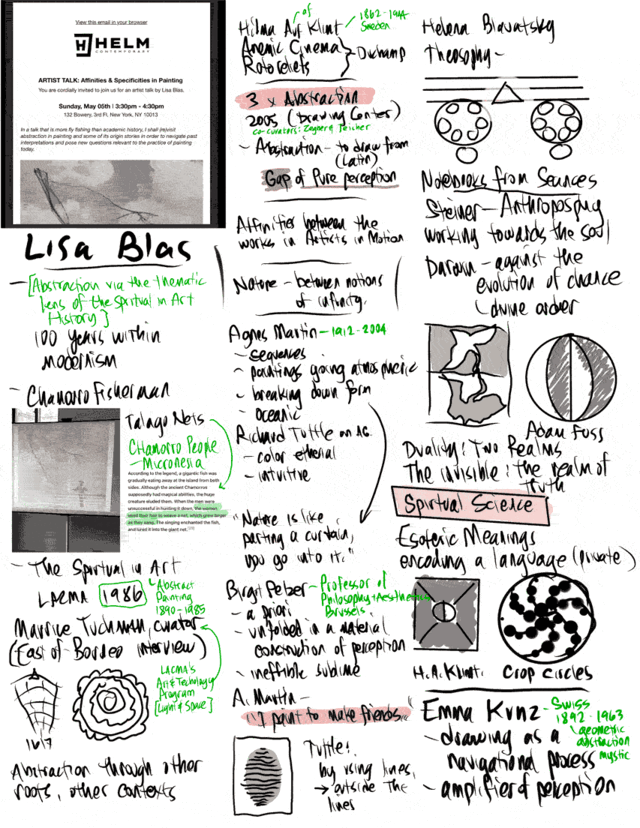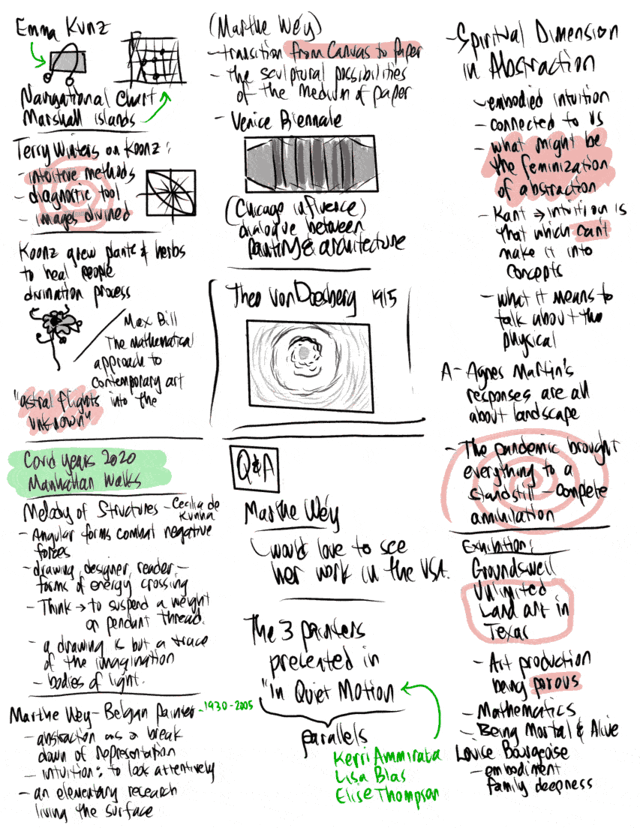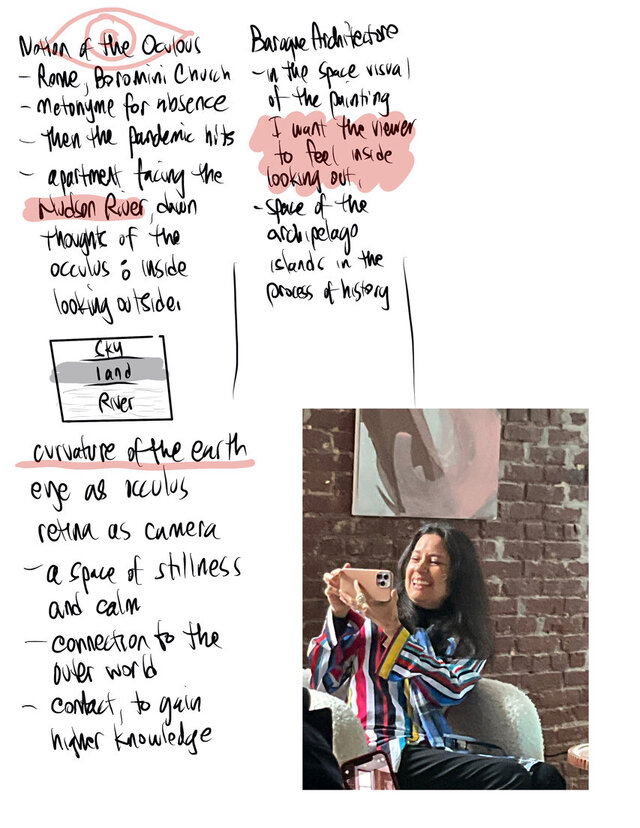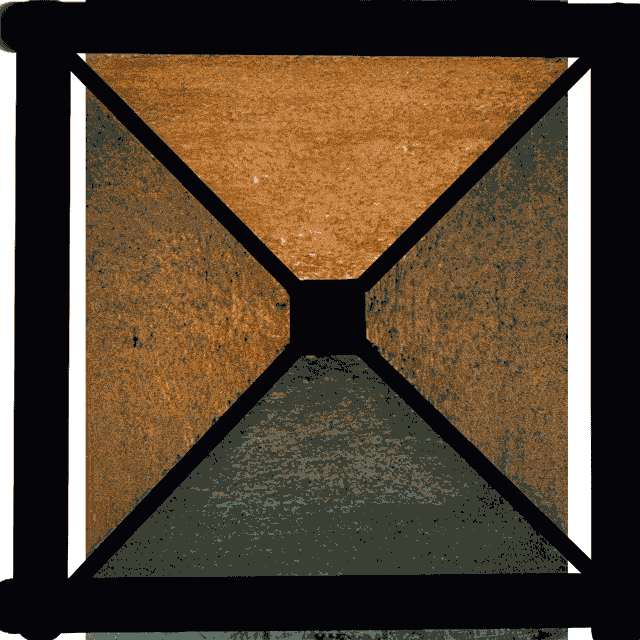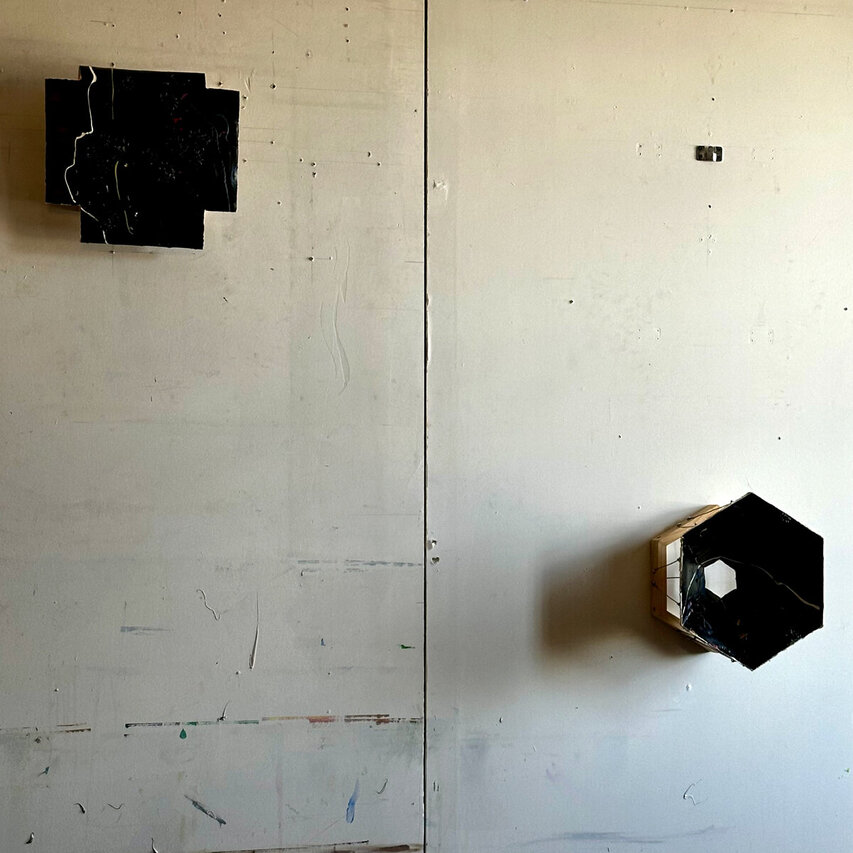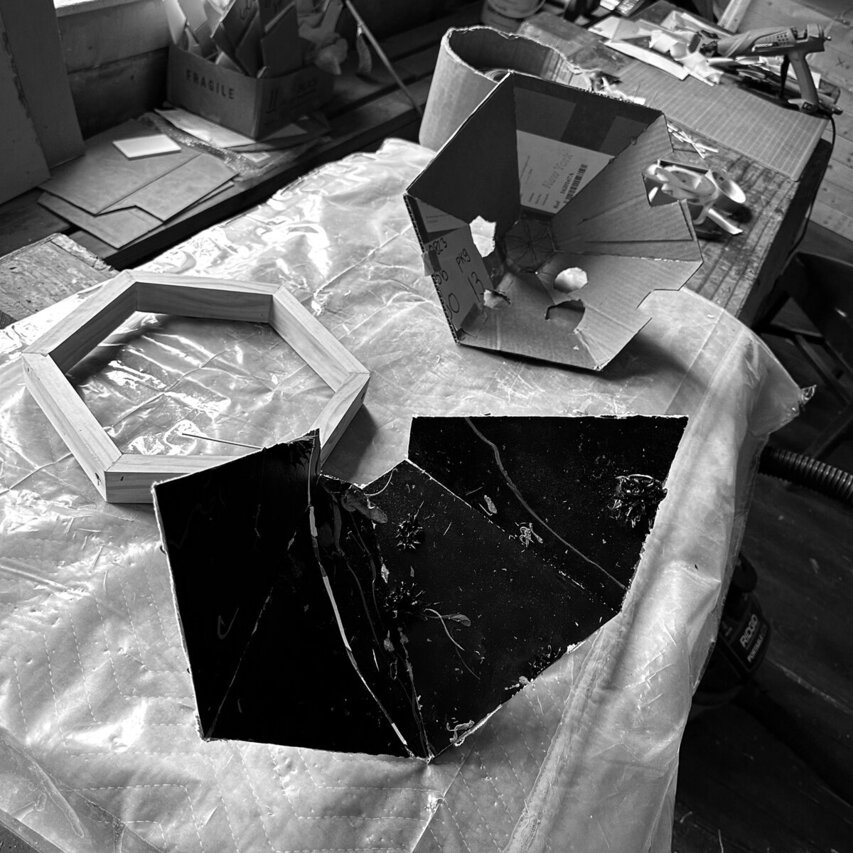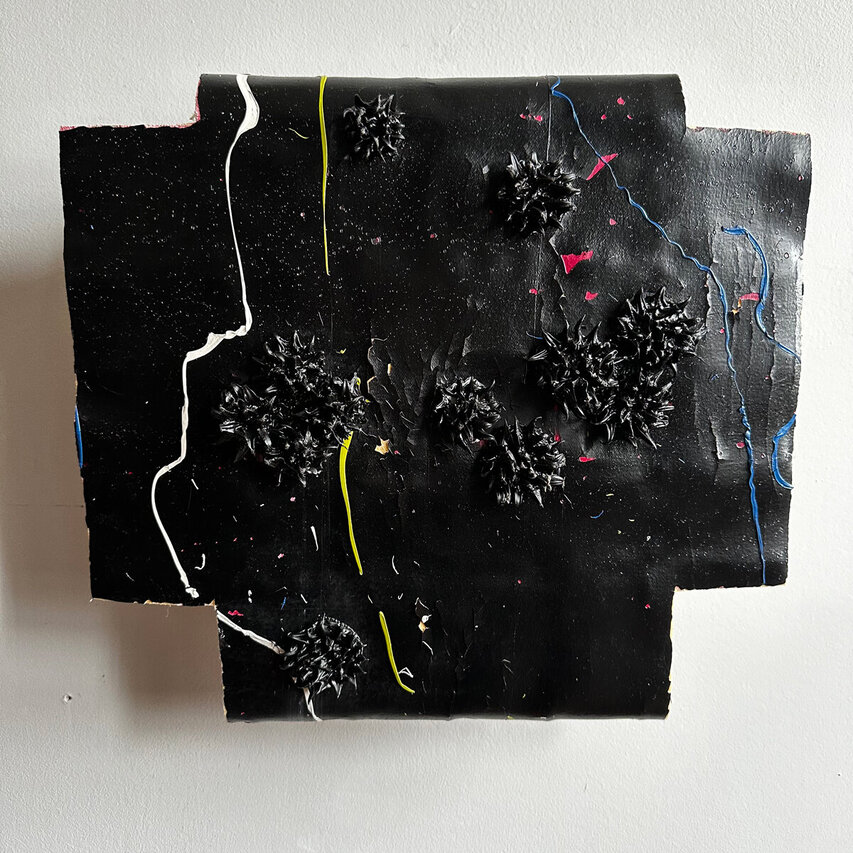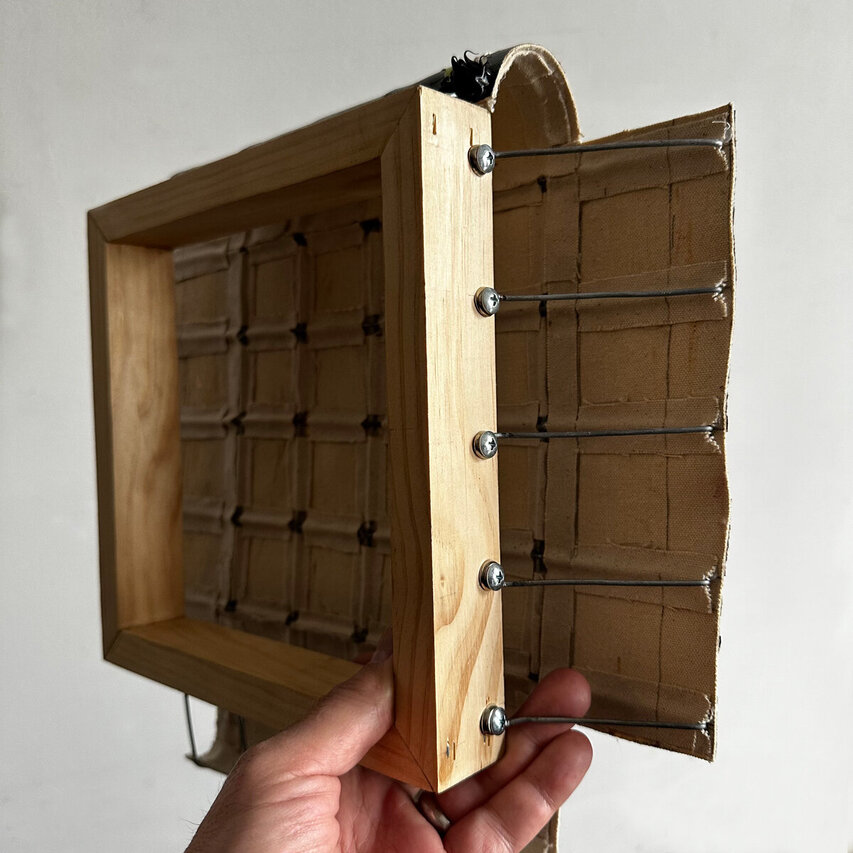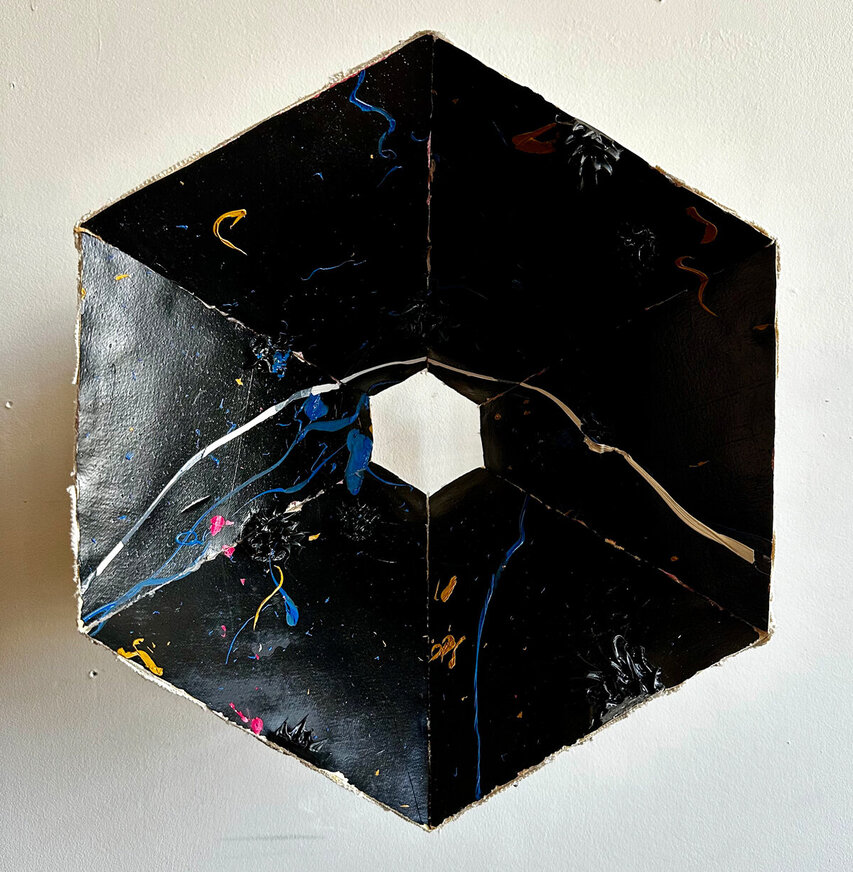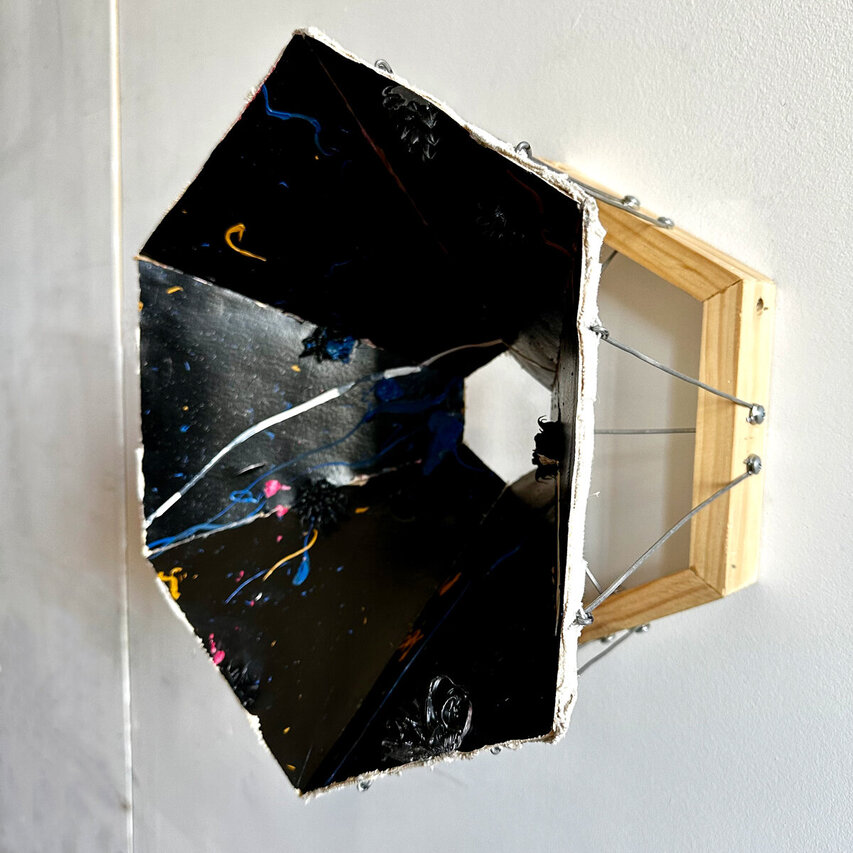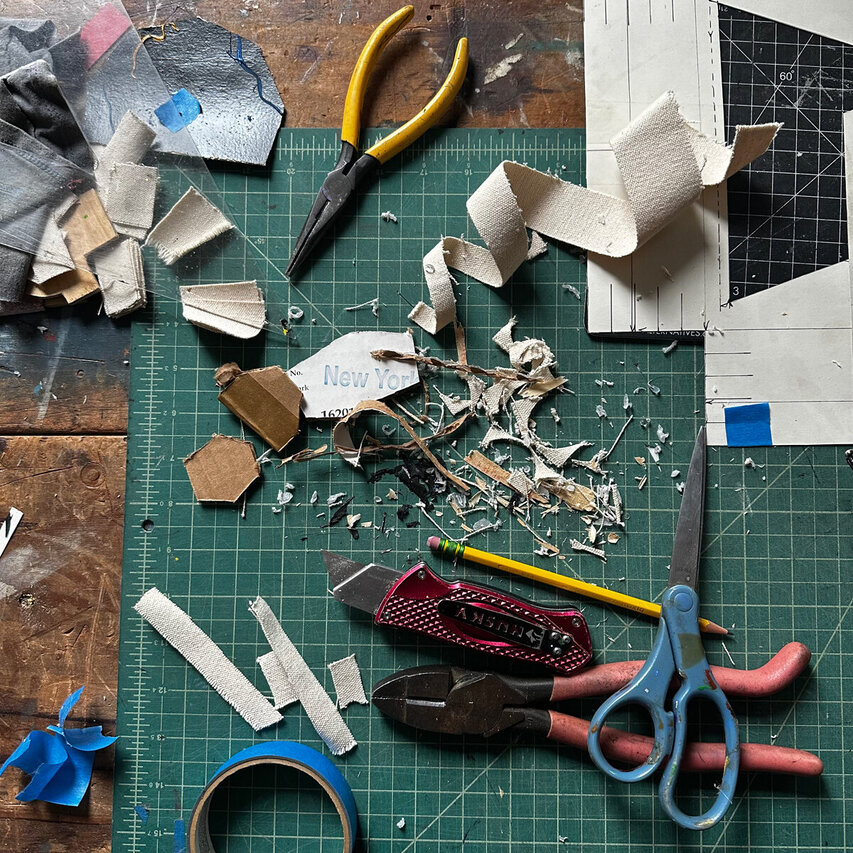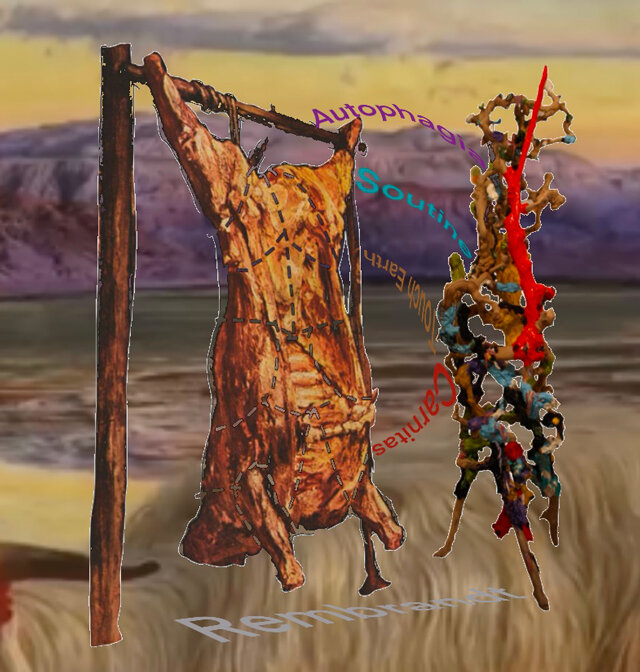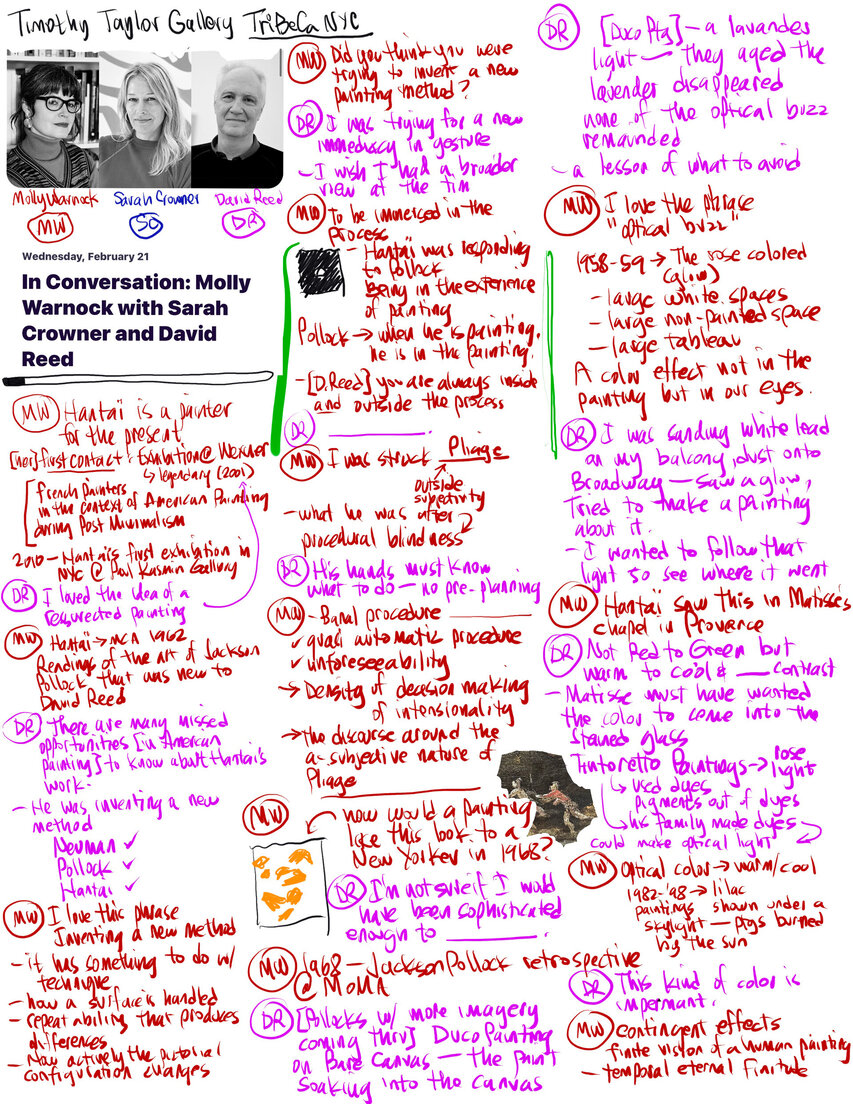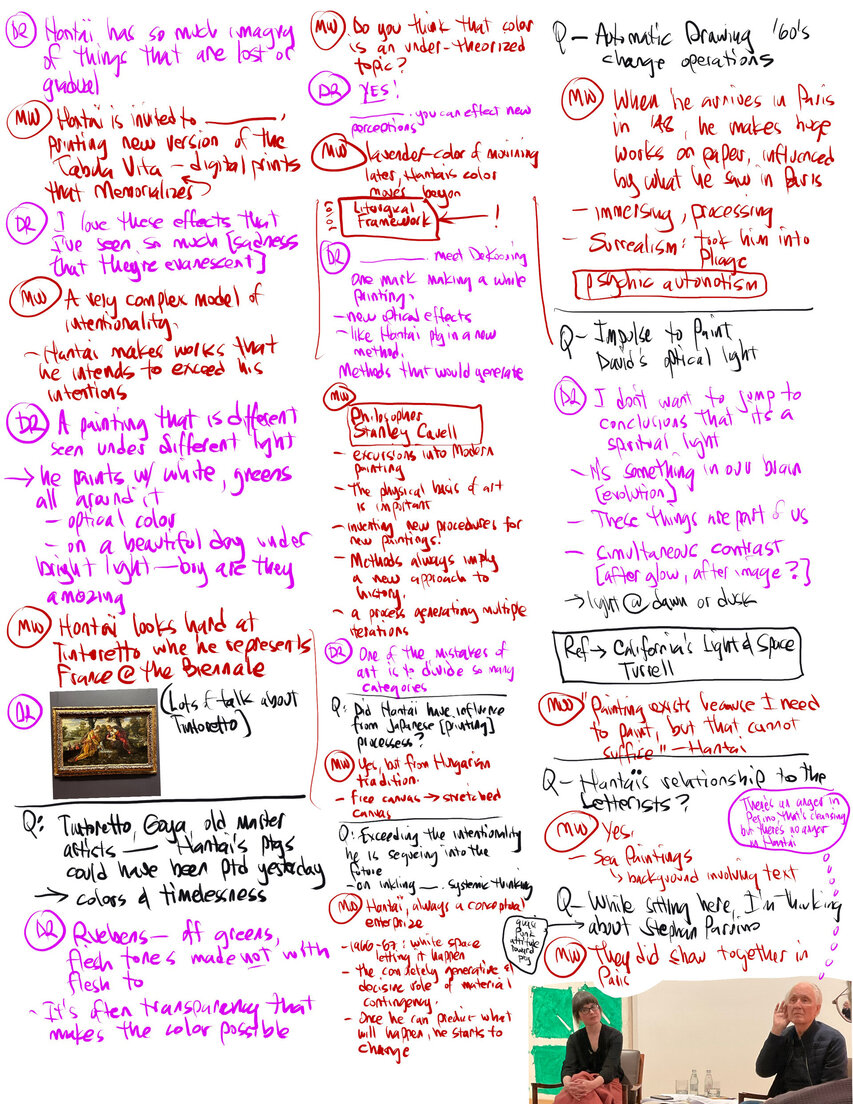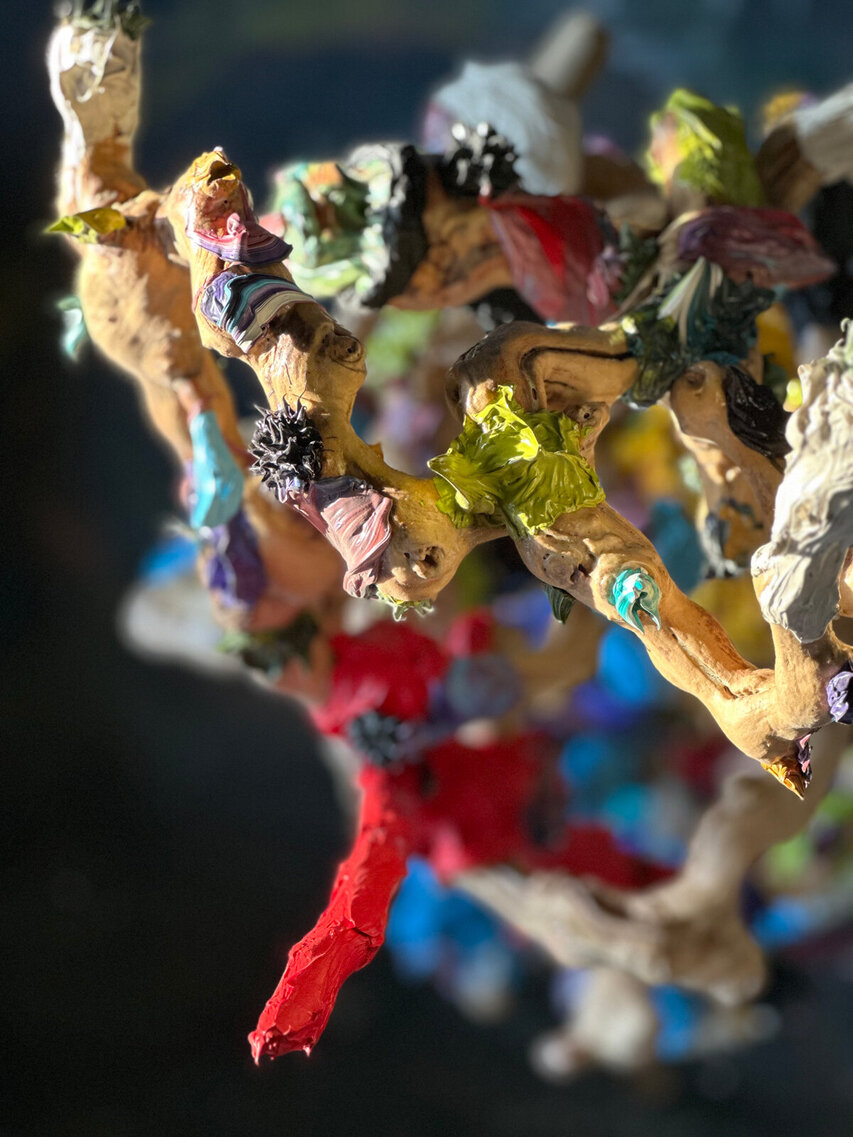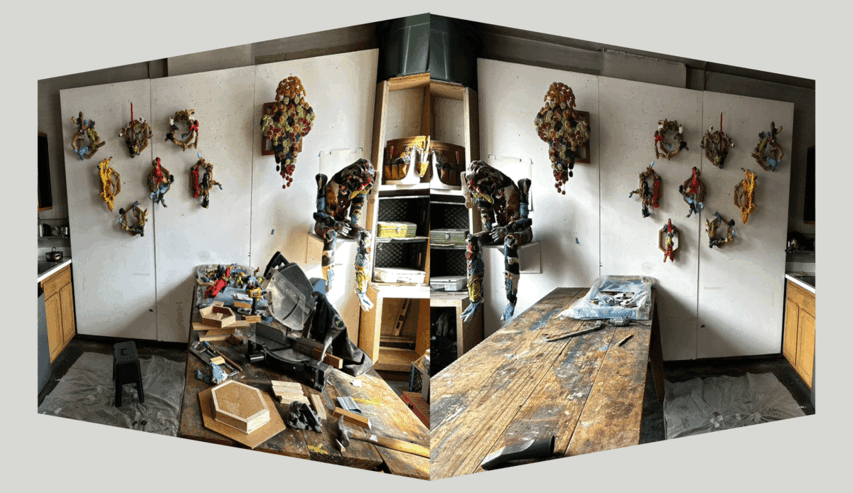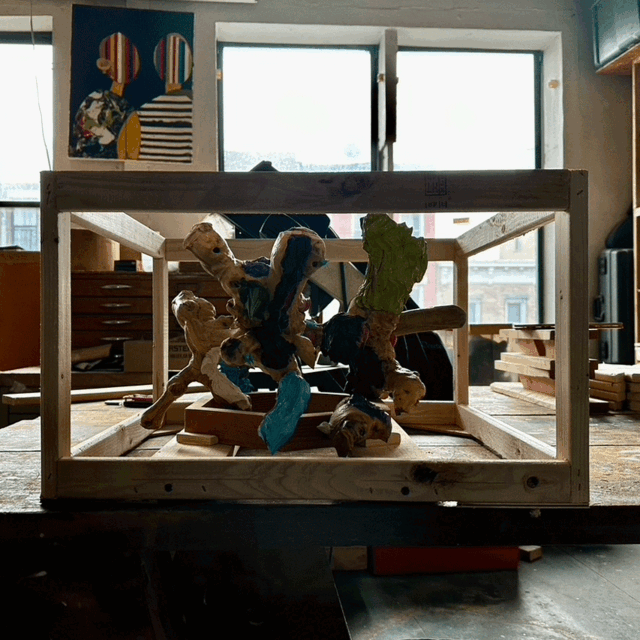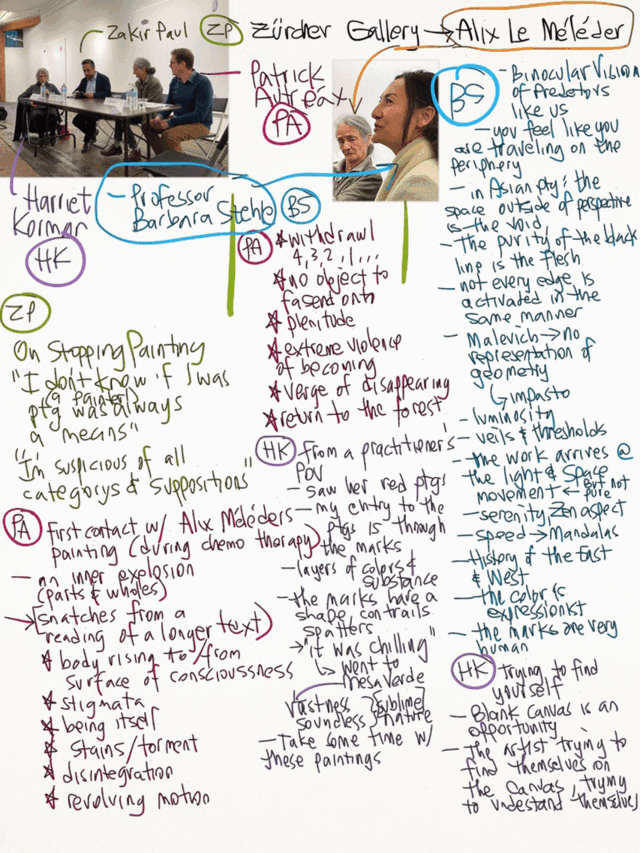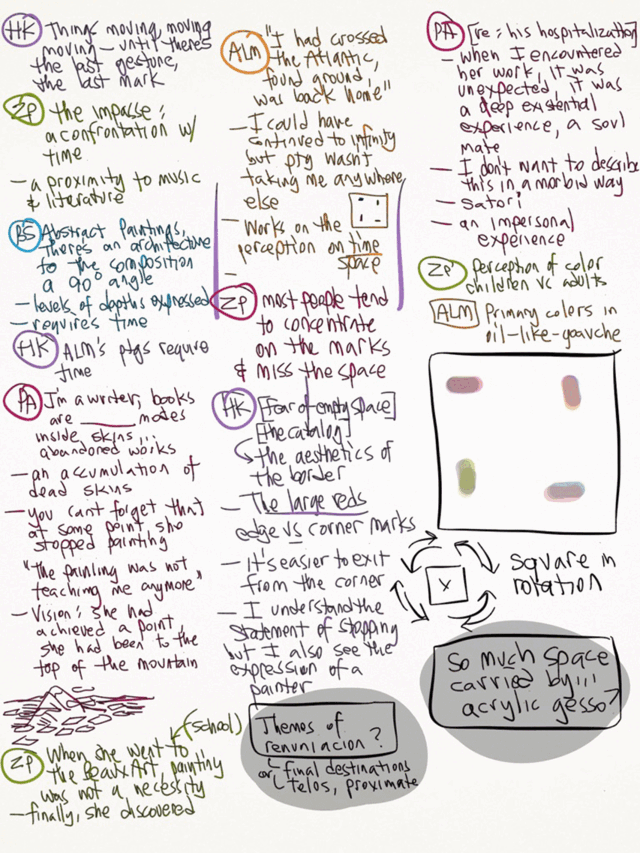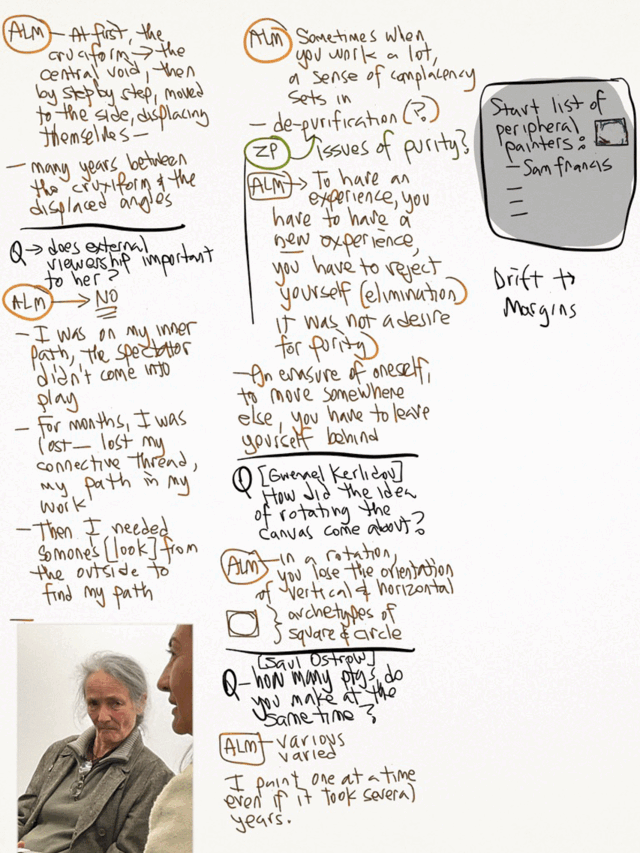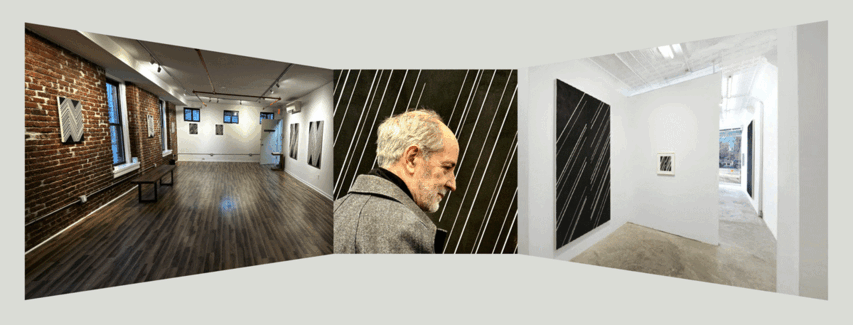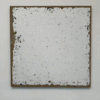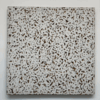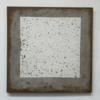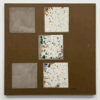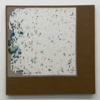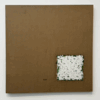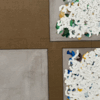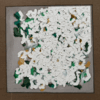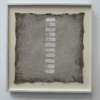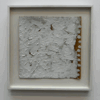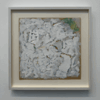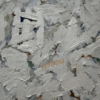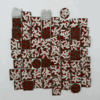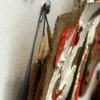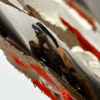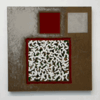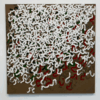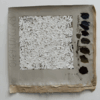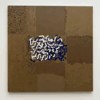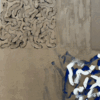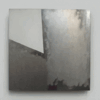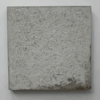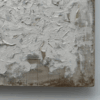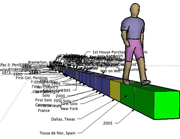February 19, 2025
No Judgement, Annotated.
The follow are screen grabs from my Notes application of Gordon Hughes' review of Benjamin H. D. Buchloh and Hal Foster's book, titled Exit Interview.
This is my favorite method of close-reading texts I like. Copy and paste it into
Notes, highlight, color fonts, underline, bold, italicize, change font size.
Really liked what Gordon Hughes had to say, extremely interesting. He touches on thoughts I've written about elsewhere in this blog. Intrinsic and extrinsic value, commodities and art objects, Modernity and the Industrial Revolution, the relation between the Modern and Postmodern, Duchamp (especially Thierry de Duve's writing), the inherent death wish within Western Civilization, deskilling, Ryman, the need to move past the End of History thesis...
Again, the images below are screen grabs. The links you see can't be clicked. Sorry about that. This is much easier than adding a hive of html's to the original text. Plus, I wanted to bust this out and get on with studio work.
These are raw notes, written on the fly paragraph to paragraph. More to come in terms of mapping out the facets of the diamond of Western Civilization and presenting it in a more succinct manner. A huge task, yes, but I feel compelled to do it before too much of my time on earth runs out.











February 7, 2025
January 28, 2025
Fresher Prey
Every so often, a group of artist and writer and artist/writer friends meet at Dallas BBQ in Chelsea. Over a group SMS, debates were raging over Dean Kissick's article in Harper's, The Painted Protest. Over the past couple of months in the chat, articles were dropping in, drip drip. By the time the meet happened at Dallas BBQ, everyone seemed exhausted with the topic. Hashing out the priority between art-for-art's-sake and art-for-politics had not only become tiresome but at least from my perspective, a dead end. Everyone else in the group seemed to share a variation of this sentiment.
Different people were working on drafts destined to be published soon in various publications. One was working on an article about the Guggenheim's Orphism show, questioning if it should be called a movement, whether it was initiated by the artists or assigned by others post facto. Another was writing a piece about how the Metropolitan Museum's recent installations seem over determined or over designed. Another was writing about a piece about how Kinetic Art never got its due.
All three seemed to me to share an over-arching concern about what has be recently called a vibe or vibe-shift. I thought that it was interesting, that this could be a way to move past the loggerhead problem of The Painted Protest debate, to talk about how the art world's conversation phases in and out periodically. I mentioned Becca Rothfeld's post in Substack: "what the heck is a vibeshift?", where she treats the idea of a vibe shift something like the phenomena of semantic satiation, where the constant repetition of a word often leads to an evaporation of meaning, in this case being a conceptual variety of it. Everyone was talking about vibes and vibe shifts and suddenly we find ourselves at a point where we don't know what exactly what we are talking about anymore.
I brought up a bon mot (at least I think so) that I had dropped in chat earlier: "The marquee always changes. This is its nature. The marquee must change." Identity Politics has had a long run now. What's next? Any ideas?
The cat had already had its' sport with the mouse and now it seemed to be dead and lifeless. It probably was. Uninteresting for felines. The group poked at the lifeless body and the conversation moved onwards to fresher prey.
Afterwards, returning home, I played with the carcass of the mouse a little more. My notes:
Some thoughts that might add up:The proliferating rapidity of art movement generation at different stages of art history is spun up by an enthusiasm, consumption and exhaustion, the rate of which seems the same no matter when they happen, not really affected by accelerating modernity (what happened in the 1910's seems similar to post WWII & Vietnam years*), possessing a constant seemingly imparted by basic human character. *Does war quicken art movement formation? 🤮
What qualifies the merit of an art movement, actually? Is it enough that a group of artists share inspired concerns and if so, how much deviation between their focus disqualifies the formation of a putative movement? Does such a concordance actually require a resonance echoed by critics and institutions? Is there a minimum degree of resonance? What's the smallest molecule of art history? In connecting a collection of shared concerns across similar chained episodes in art history, is there a point when the links between dots can become too attenuated? Does the existence of sleeper art movements (arguably Duchamp, for example) disquiet our ability to know anything really substantial or make substantive claims with an air of finality when there might be others sleeping now in plain sight? Can institutions spike the ball? Can they over manipulate the perception of an art movement? Distortion? When are thumbs on scales? Is there a dynamic, something like an emergence property going on here? While Rothfeld's piece was a toss off, her questioning "what is a vibe, actually" becomes something like semantic satiation where when we say a word over and over again, we lose its meaning. Could a similar thing be happening when we question what a vibe or vibe shift is, what an art movement is? A similar thing happens when we ask what art is, doesn't it? It seems that with some ideas or concepts, once you go too deep, it's (seemingly) impossible to surface again.
January 27, 2025
Messaging My Friend A
I had SMS messaged my friend A, these two TikTok links:
Aidan Walker (@aidanetcetera) intro to Historie d'Horreur and the phenomenon of Lakaka:@aidanetcetera The lore de @lakaka , a great innovation in online literary forms. #lakaka #lore #oupigoupi #france #meme ♬ original sound - Aidan Walker
(LINK)
(Sometimes the embeds don't work. Don't know why.)
Historie d'Horreur, @lakaka.land:@lakaka.land histoire d'horreur 😱 #dankmemes #catmemes #chat #brainrot #horreurtiktok #humour #offlain ♬ original sound - lakaka
(LINK)
***
"I don't have that app"
So I took the trouble to send the links to him again via email, taking not a little pleasure in knowing that I'm probably bugging him.
***
A's reply:
Unfortunately, considering how memes function is outside of my interest.
I've been rereading Deleuze's Bergsonism of late, a pleasurably confounding text.
These dorks are trying to wrap their heads around some of the concepts therein.
You will at least appreciate the room in which they sit.
***
My reply:
A,Beat for beat reactions:
First thought into the video: so, all is image. Nice summation: "..collapsing matter and memory..." referring I assume to the problem of bridging the perceiver and the noumena.
Genesis 26: Then God said, "Let us make mankind in our image, in our likeness..."
Wait a sec. Is this Platonism?
Memory as flow. Then, memory was then thought of as a playback, that memory is a neural pathway etched in our brains, . Today, the idea of memory as a reconstruction, that memory is not summoned but instead reconstructed, recreated (and importantly, error prone) in our brains, The flow concept is not displaced, but maybe modifiable?
There's another idea in physics about time cones or timescapes, rendering the past and future more or less fixed.
T=6:00 in
A reliance on calculus. Lines tangent to curves. Slicing derivatives.
There's also a scratching going on in science suggesting that the brain is a transducer of reality past, present and future... not a singular mainframe. A self distributed, not a materialist singularity.
"Science of the day." Keeping up with the evolving debate would a good Bergsonian make. String theory just got dethroned, for example. Dark Matter might be a dead end, for example.
T=11:00
The reduction of the image: that's what a transducer does, a device that converts energy from one form to another.
Maybe, in order to live and navigate in a material world, our access to the totality of which our imaging slices is too much for a mortal capacity. A limited capacity just might be the only way to exist in this world, to live on an earth for any given time. A totality is another word for G-d and isn't it a thing in the bible that direct contact with G-d would destroy mere mortals? Therefore, the need for a GUI avatar like Jesus or a Holy Ghost to sweep a pathway towards the godhead.
"Ego consciousness is hte least conscious facets of our perception."
Nice:
"the image for Bergson is our own body. That is what we experience and what we always there... and it is an interrelationship with the entire universe, this is where Delueze's Plane of Immanence comes in..."T=18:00
Man of action vs man of dreams.
My parents thought I was too day-dreamy and my dad used to say: "Son, you're like a chicken, born in a new world every day." Thanks, dad! 😂
Balance, a good thing.
Extracting advantage, good coinage.
T=23:00
Calculus reference. Shout out to Leibniz.
***The dome? Bucky Fuller was the apex dork. I prefer Gaudi. Good but way-too-thorough presentation by Mark Bury at the Architecture Association. You might have to press your finger on the screen for 2x speed to get to the good parts 3/4 of the way in. Good stuff to get the real nut of parametric design:
Why I thought of you with the Historie d'Horreur and Lakaka:The short bursts of storytelling adding up later in any order, the cats, the noir, the French attitude and his references to Godard...
...made me think of your oeuvre and how it operates in a similar way. Each thing you make could be likened to a TikTok video, viewing one after the other in any order of linkage could suggest a larger narrative with flexible interpretations, each of which are imbued with a certain attitude and character as your work is.
-D
Historie d'Horreur and Goddard:
@aidanetcetera Brainrot, Godard, and online cultural exchange. #lakaka #lore #godard #aboutdesouffle #brainrot #france ♬ original sound - Aidan Walker
Wish I could reveal who A is.
If I asked him, he'd probably say no.
January 25, 2025
Morandi Panel at Zwirner
Last fall, there was a significant exhibition of Giorgio Morandi's paintings at Mattia de Luca Gallery in the Upper East Side titled Giorgio Morandi - Time Suspended, part II.Curated by Marilena Pasquali - founder and director of the Giorgio Morandi Study Center, Bologna - and Mattia De Luca, the exhibition brings together approximately 60 works from across Morandi's career on the occasion of the 60th anniversary of the artist's death.
During the first two months of 2025, David Zwirner Gallery in Chelsea opened Giorgio Morandi: Masterpieces from the Magnani-Rocca Foundation. Similar to the Mattia de Luca show, the Zwirner presentation is closely coordinated with formidable institutions supporting Morandi's legacy across the Atlantic.
The Zwirner show seemed -to my eye- to feature off brand Morandi, what people usually identify as the typical Silence and Light Morandi (an intentional wink to Louis Kahn, same vibes). Anomalies such as (self) portraits, floral still lifestyles, atypical props, etchings, drawings, landscapes, and townscapes. It was effective if it was meant to be instrumental in destabilizing the usual image of the eternal, iconic Morandi scrubbed of detail in softened light, brush touched ever so softly and deftly. That Morandi.
There was a panel discussion. I took notes.
Some key take aways from the panel discussion:January 20, 2025
Responses to Dean Kissick
Let this post be an archive of all the responses to Dean Kissick's article in Harper's Magazine titled "The Painted Protest", subtitled "How politics destroyed contemporary art."
Kissick had kicked open quite a beehive, but I think that the beehive of Identity Politics in art was already in an overripe mature stage, with an ever thinning skin ready to burst. Conversations among my circle of friends have been pinging back and forth, mostly via text, with each new article crackling online and this blogpost has been in formation for at least a month now, swelling my Notes app.
It's fitting yet coincidental that today's date is the Inauguration Day for an extremely contentious presidential election in the USA. November 6, 2024 was a watershed moment and catastrophic for the institutional sphere who depended so dearly on a stable status quo to secure the power structures assembled to date. No doubt, Harper's Magazine intentionally published Kissick's a month after that fateful date but I estimate that not only had Kissick been formulating his thoughts about the topic years earlier, but Identity Politic's latest manifestation as DEI (Diversity, Equity and Inclusion) within all facets of the superstructure corporate, governmental, educational and of course the arts had imparted... some would say an overconfidence and some would say a fatal level of hubris. This, a fulcrum in a topic full of fulcrums.
There's much to be said about the articles linked below. In my Notes app, each I read each closely, marking up passages, changing the type color red and bolding, italicizing and underlining, adding my own commentary interspersed between paragraphs in blue type. I'll content myself with holding this back not only for the shear tedium it would cost me but probably for you too.
This topic is aging fast not only because it is currently pivoting on what I consider to be an absurd binary of Art-for-Art's-Sake versus Art-for-Politics-Sake but also because a question is yawning about whether there is more to Art than it's current definition. Regarding the former: this is what happens when "live or let die" makes war on "live and let live". Regarding the latter: this is what happens when Fukuyama's "End of History" comes home to roost and the eschatological fever dream tries to force-foreclose on the horizon of utopia, a beat too soon.
I predict that in a year's time, we will all be off to new pastures because, as I like to say:
The marquee will change.
It must change.
That is its nature.
Kissick's subtitle: "How politics destroyed contemporary art." Art can never be destroyed, but it will go underground if it has to.
***
To the links:
PostScript: More articles coming in:
*
Tangential:***
My favorites were Saul Ostrow (He's chasing down the socio-economic aspect) and Ben Davis (encyclopedic, and yet a bit hedgy with too much passive voice but he saves the day in the final paragraphs by flagging Olufemi Taiwo's Elite Capture: How the Powerful Took Over Identity Politics (and Everything Else)).
***
TLDR?
Summary via Saul Ostrow's ChatGPT (January 7, '25):
1. Ajay Kurian criticized Kissick's assumptions about identity art and institutional exhibitions, arguing his views align with anti-woke culture wars and fail to address systemic issues in art discourse.
2. Patrick Nathan highlighted the discomfort of partially agreeing with Kissick while finding his critique reactionary and coded against diversity.
3. Saul Ostrow argued Kissick overlooks historical and economic factors shaping art, critiquing his call for a return to romantic ideals.
4 Jonathan T.D. Neil critiqued the article's length and editing, while acknowledging its articulation of a shared sentiment about the art world's political turn but questioning its nostalgic call for Romanticism.
5. Johanna Fateman published Ajay Kurian's detailed critique, which challenged Kissick's stance on identity art and institutional exhibitions, framing it as reactionary and aligned with anti-woke rhetoric.
6. Discussions on platforms like Threads expressed concerns about the article reflecting a broader cultural shift to the right.
7. Christian Viveros-Fauné published a response in The Village Voice to Dean Kissick's article, "The Painted Protest: How Politics Destroyed Contemporary Art." Titled "The Culture of Complaint 2.0: White Guy Wants His Museum Back," Viveros-Fauné critiques Kissick's perspective, suggesting it reflects a nostalgic and dismissive view of contemporary art's political engagement
On Substack
1. Rob Fields critiqued Kissick's call for self-involved art, emphasizing the need for work that fosters empathy and understanding in a divisive era.
2. NewCrits labeled the piece a "clickbait manifesto," challenging its logic and framing Kissick's critique as resentment toward identity-focused art.
On Reddit, notable responses to Dean Kissick's "The Painted Protest" include:
1. LandscapeRocks2: Agreed with Kissick but emphasized the potential for dissent and experimentation in traditional gallery spaces .
2. NationalHunter5407: Critiqued identity-focused art, expressing hope for a new artistic direction beyond current trends .
3. SufficientPath666: Strongly disagreed, highlighting the necessity of addressing transphobia and personal struggles in art .
4. Glass_Purpose584: Praised Kissick for voicing a bold opinion but criticized his perceived dismissal of contributions from artists of color
January 17, 2025
Tell Them I said No

Little by little, then all at once, I've been allowing some lag in posting blog entries here. Circumstances both personal and professional have played a role and despite that this is a kind of public diary... discretion dictates discretion.
I've been maintaining this weblog for now more than twenty years and vast changes have occurred both in my career and in the character of the art world and being chatty about this is the wrong way to go. Thus the tight lips in these "pages".
Lest you read too much into the cryptology of this and the over-arc of my posts... no worries. Things are good.
What is success in art? Making art. A buoyant imagination. The urge to get into the studio, to make things. This and more is happening for me now and into the foreseeable future.
But the art world has become strange and estranging. Hebert documents well the now deep history of artists who by staking all on the heart of what art means, who have removed themselves from the charade that has crept into the various architectures of what has become our art world. The phrase "art for art's sake" has been abused up to this moment and the original meaning nearly lost. This condition has been discussed widely and variously by my circle of artist friends and when I insert the idea that "we are Ronin", they understand and when some might not necessarily agree at some fundamental level, they don't push back. In a world so besotted, some have to guard the flame and keep it safe from the rain for better weather ahead.
Art
The definition of art seems to confound many people, too many are in the art world itself.
Here's my definition in two aspects:
*The spanish expression is ¡Manda cojones!, which translates to "It's fucking awesome!" I've used it time and again both in Spain and in the States, usually resorting to what is probably my own peculiar transliteration, "huevos en mis manos." I've never thought I was misunderstood. When I've deployed the phrase, my meaning is a combination of trepidation and commitment, that I'm operating into unknown territory, that the stakes are high.
***
PostScript:
(I imagine this to be the sticky spot for a never ending list of related subject matter. A magpie's nest.)
- I've found Carter Ratcliff to be a delightful writer. His Substack emailer is welcome in my inbox. Here he is on the definition of art:We ask "What is art?" not to settle the question but to force ourselves up against the impossibility of settling it--an impossibility worth noting, as explicitly as we can, for it is what keeps art open and present and therefore alive.
- Thierry de Duve, THE INVENTION OF NON-ART: A HISTORY:
I DON'T KNOW WHO COINED THE EXPRESSION "NON-ART." But I remember that "non-art" and its supposed twin, "anti-art," were very much in fashion in the art criticism of the 1960s. The terms were used to refer to Dada and early Pop art, then seen as "Neo-Dada." However, by the mid-'70s, critics had realized that Pop art owed very little to the nihilistic thrust of the Dadaists. To imagine Robert Rauschenberg shouting with Hugo Ball at the Cabaret Voltaire in Zurich had become counterintuitive; attention had shifted from Dada to the Neo in Neo-Dada, from the revolution to its recuperation. Consequently, "non-art" and "anti-art" fell out of fashion. It was clear to everyone in the art world that the aggressiveness of anti-art had been tamed, that the negativity of non-art had been in turn negated, sublated, or otherwise mutated into positivity.- The aesthetic judgment "This is art" in Stanley Cavell and Thierry de Duve by Pioter Shmugliakov & Alma Itzhaky:
Not everyone greeted the erasure of non-art's negativity with indifference or resignation.
Before the rise of the avant-garde movements of the 20th century, the principal question vis-à-vis an artwork was the evaluative one: "Is it a good work of art?" or, in a manner in which it was most commonly posed, "Is this piece of art beautiful?" The fact that this is art that is being judged, on the other hand, was trivially given--neither argued for, nor disputed. The classification of certain objects as works of art, if it gave pause for philosophical queries at all, was considered an empirical question, preliminary to the aesthetic appreciation of such works. In the 20th century, however, the cultural situation in the arts became increasingly defined by the fact that the very belonging of certain objects to the category of art turned to be a matter of controversy. Confusion and dismay became the stereotypical responses of art spectators faced with certain objects that claimed to be art, and were treated as art by certain people and institutions, but which by the traditional standards shared by most of the population appeared as no more than a hoax or a provocation (viz. Malevich's Black Square [1915], Duchamp's Fountain [1917/1963], Manzoni's Artist's Shit [1961]). Since the 1960s, clarifying the status of these objects also became a central issue for philosophical aesthetics.
- X
December 25, 2024
November 11, 2024
November 7, 2024
September 20, 2024
June 3, 2024
June 2, 2024
Let's Call This a Bloom
An image appeared in my mind one day. A square, circled. A painting blooming from its support, a ring sprung a square, a frontal view displaced 90 degrees, the painterly seeped past the frontier of the canvas and into the wood and wire of the support. Petals spread wide, straining pistil and stamen forward, the gonads of painting glimmering for the horizon.
Later, associations. The first was a turbine. It was about the spin, it was about design, of blades about to spin but not yet so. Not yet. The piece was made, or well on its way. Wires implied motion strongly and yet they are fixed.
Spokes.
Bicycles.
Duchamp's Bicycle. He said that he made it just because he liked to see it spin. I'm in the middle of reading Thierry de Duve's "Clement Greenberg: Between the Lines". In it, a distinction is made, Greenberg's and I think de Duve's as well, between an art object appreciated aesthetically and one calculated in its' creation to impress. There must have been a moment preceding the manifestation of "Bicycle" when Duchamp found himself noticing how nice the spinning bicycle tires were, one moment here, one moment there. How better to hold that sensation aloft and away from the unpredictable circumstantial encounter than to fix it on a stool? Art material was all around him, freed from the specialty retail stores, ubiquitous. People said Duchamp was aloof, Duchamp had feelings, no matter how antiseptically there were categorized as aesthetic. Greenberg felt compelled to confine those feelings to the classical bins but I'm not yet entirely sure that de Duve does, even though he had charted very clearly the dangerous shoals of Art-In-General in "Between the Lines" and later more fully in "Duchamp's Telegram". All of this, I'm currently digesting.
About a week or two after I completed this piece, I sent an image of it to a friend, and his reply was a reference to the eclipse of 2024, the one everybody was abuzz about in the USA. Indeed, at the time of its making, the association didn't really occur to me. It seems a stretch, especially since I had made associations to celestial mechanics to art history in past blogposts. But yeah, the thought hadn't occurred to me probably because I didn't get swept up in the media hype at the time. And yes indeed, this is a great association. I love it, I've always had a fascination with astronomy since I bought an 8" Celestron in the 90's and learned that the sights we see of the universe in the media is quite different from what we can see with conventional optics here on earth. The eclipse, any eclipse is bound to be less than impressive unless one is directly within the path of totality, and that moment is all too fleeting as it is. But the association is wonderful, even if the reality of the universe is currently scrubbed of unimaginably vast distances between all celestial objects. Our abstractions of the world are quite vivid and spell binding.
May 20, 2024
May 14, 2024
Mighty Small

VERY happy to report my inclusion into this group show at Front, hosted by dear old friends, artists Sharon Englestein and Aaron Parazette.
FRONT 1412 Bonnie Brae St. Houston Texas, May 18 - June 15, 2024
From the website, a blurb:
Mighty Small brings together nine paintings by nine artists from around the United States. The aim of this exhibition is to demonstrate how much can be seen, conjured, and achieved within a modest frame. By contemporary painting standards the paintings in this show are small, but the effect of each one is expansive and reaching--even mighty. Encountering a small painting can be an intimate experience, as when you encounter it you are placed in the same proximity that the artist was in when they made it. Our constant processing of images on screens is too often seen as analogous to actually being with the thing the artist has made. To be with the actual painting is to encounter surface and depth, images and material, the ordinary and the mysterious, and potentially so much more. Each painting in the show provides this opportunity. Each is a record of idiosyncratic intentions and impulses, and each is a small but mighty moment.
May 7, 2024
Notes on Abstraction
In advance of a meeting next week with friends to talk about Abstraction, I created a note file* and dumped thoughts as they occurred to me during my day to day.
Then, I arranged them thematically.
A rough classification.
Here they are.
What is Abstraction?
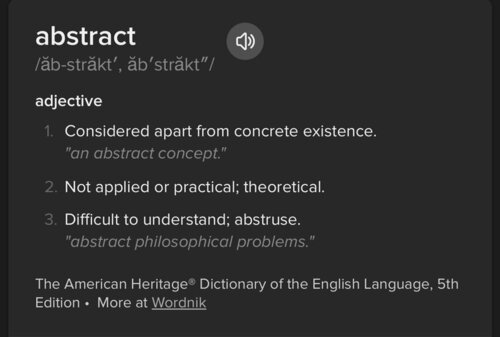
"The idea of "removing" or "pulling away" connects abstract to extract, which stems from Latin through the combination of trahere with the prefix ex-, meaning "out of" or "away from." Extract forms a kind of mirror image of abstract: more common as a verb, but also used as a noun and adjective."
The Remove
Duality
"...the original human nature was not like the present, but different. ...the primeval man was round, his back and sides forming a circle; and he had four hands and four feet, one head with two faces, looking opposite ways, set on a round neck and precisely alike; also four ears, two privy members, and the remainder to correspond. He could walk upright as men now do, backwards or forwards as he pleased, and he could also roll over and over at a great pace, turning on his four hands and four feet, eight in all, like tumblers going over and over with their legs in the air; this was when he wanted to run fast."
Mathematics
Mental Categories
Modernity
***
After listening to Lisa Blas give her talk about affinities and specifications in painting, she provides us with a rich vein to think about abstraction with. Adding another, probably more vital classification, using the framework presented by Blas:
***
Spiritual
*
*
*
*Another postscript: Thoughts on the fly. Usually, I flip out my phone while I'm commuting in the subway, the D train to Brooklyn, and catch the butterfly of a thought. This happens so often that it seems that if I want to brainstorm, I should just get to the subway station and let it rip.
April 27, 2024
Modernity and After Modernity
Below, the contents of my Notes file about Modernity. One of many sacs to be bled into this blog from time to time. Thoughts sometime beg to be recorded on the fly.
A Couple of Definitions:***
Modernity and amnesia. So much forgotten.
***
Awaking mid-dream last night. A legacy old place, fragmented, in a sea of mediocrity... A&P minimarts, Dunkin' Donuts a block away from an old Mission.
Are we the Last Mohicans?
Thierry de Duve's* Fine Arts, the Academy, Bellas Artes, Non-Art, Not-Art, Art-In-General... add to that another category, a faded simulacrum (receding image?) of Legacy Quality.
The fading Good lost in a sea of Bad.
Re-Member.
*At the moment, I'm reading Thierry de Duve's "Duchamp's Telegram: From Beaux-Arts to Art in General" at the moment. Actually, I'm devouring the book, consonant that I believe his thesis is with my thoughts about the emergence of Modernity, the relationship between Modernism and Postmodernism and Duchamp's legacy especially in the era that can be called Postmodern. I think we, living as we are in an emergent 21st century, have a responsibility to reflect on the 20th and make sense of it, to wrest ourselves from its' grip and attempt to define the terms of a successor epoch. I'm passing the three quarter mark as I'm reading his book, slow going since nearly every sentence I find provocative, marking most of the pages with marginalia. Very highly recommended.
***
"In the 60's, the art world blew open. "
-Peter Schjeldahl
***
"He does not present the great disruption of our time in terms of contradictory tendencies in human nature."
- "Francis Fukuyama as a Teacher of Evil". (Modern Age Journal)
***
Modernity sprang simultaneously as Modernism and Postmodernism. Bear in mind the blinding explosion of technology going on at that time. Electric light, (steam) power, trains, telegraph, weapons, medicine...
Hero and Anti-Hero.
Walk on the wild side. Sympathy for the devil. LES Fleurs du man The Counter-Enlightenment. Anti-Hero.
***
Modernity profits from ingenuity, spiked by greed and war.
***
You can understand what happening now regarding the decline of the West by simultaneously considering the cynical interpretation of Thucydides as "Might makes right" with Martin Luther's "Reason is a whore".
***
Consider acceleration, then consider deceleration.
***
After Modernity:
***
Anticipation of the future (Progressivism), a better world
Catnip tool for salesmen
Eschatology
Aching to get there
Making promises that are too hard to achieve, similar to this.
***
Modernity (both Mod & Postmod), a war between vertical & horizontal axis. Quoting myself:
To be Modern is to try to touch G-d via material means, and to be Postmodern is to point at everyday life via conceptual means.
To successfully succeed the 20th century, we have to heal the schizophrenic split, re-member the crosshairs, reclaim the cross, the synergy. If not a fusion, then a toggling.
On one hand, there's an ache for transcendence and on the other, an urge for dissolution. Order (the underlying principle of all things and the way such things come into existence) and disorder (individuation and pride). To think that both hands are members of the same body prompts for me an association or a mapping onto the first and second Law of Thermodynamics (a similar twin or chiral pair): the conservation of energy and entropy. The second is easy, themes of dissolution abound in postmodernism. In the first, I fiddle with the fit of the world where energy can't be destroyed and the sum of all forms of energy is constant with the endless becoming, the constant striving of the Modern system.
Recalling Lao Tzu:
The Tao that can be told is not the eternal Tao
The name that can be named is not the eternal name.
The nameless is the origin of heaven and earth
The named is the origin of the ten thousand things.
Ever desireless, one can see the mystery Ever desiring, one can see the thousand things.
Desireless and desiring. They are different in name.
Yet they are the same.
Modernism : The nameless is the origin of heaven and earth
Postmodernism: The named is the origin of the ten thousand things.
Another model to map: System 1 & System 2 thinking
March 21, 2024
Little Big Man
Prompted by an old friend, a possibility of making small pieces for an upcoming exhibition.
"Mighty Small", is the working title. I immediately thought of Dustin Hoffman's Little Big Man.
Some pics...
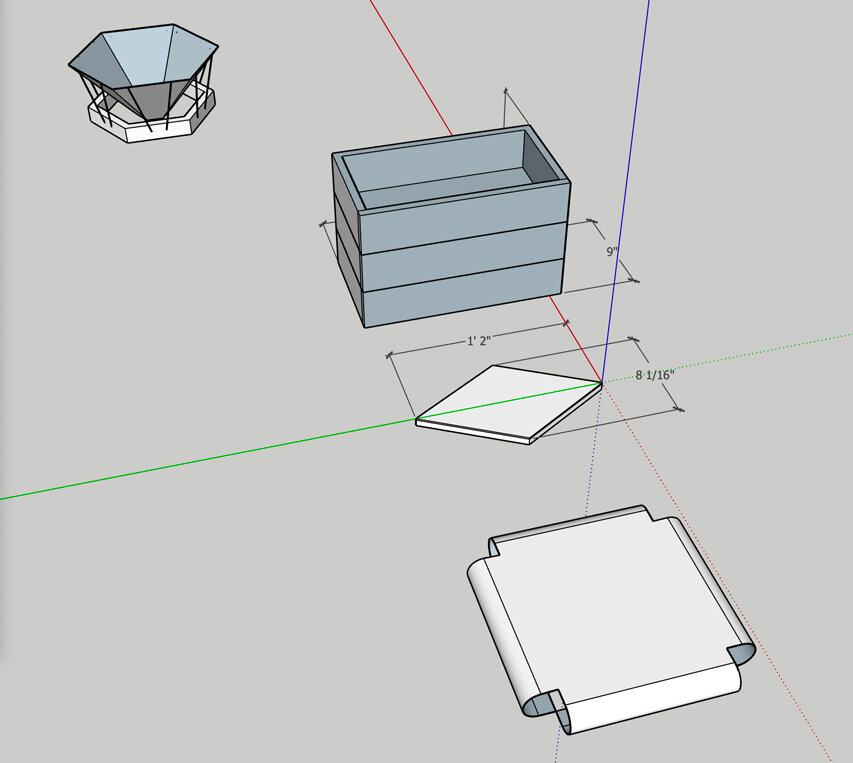
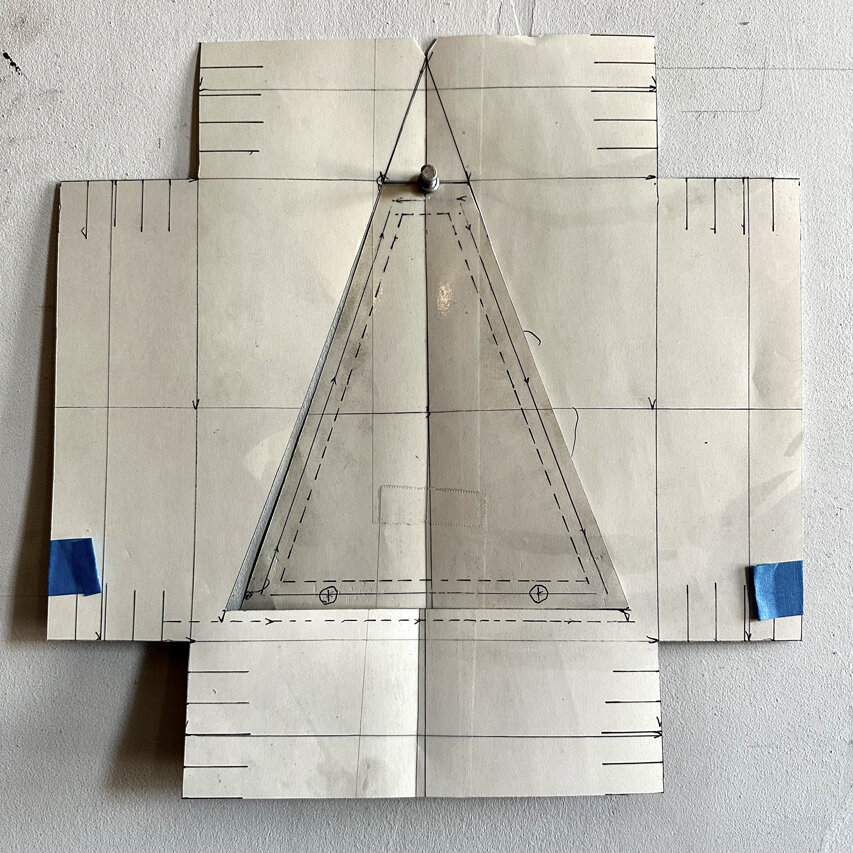
wide, almost
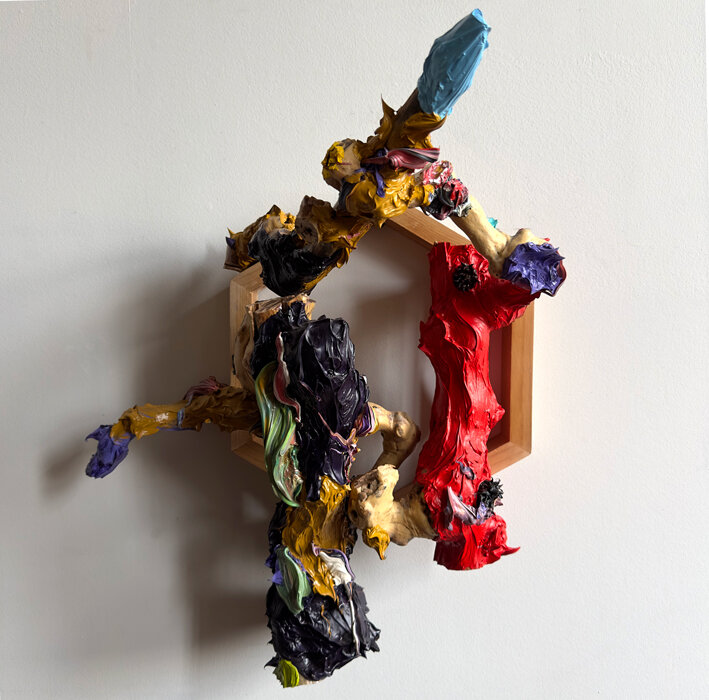
wide, almost
2024
PTG-642
18" x 16" x 9.5"
Oil on Wood
discover a new realm
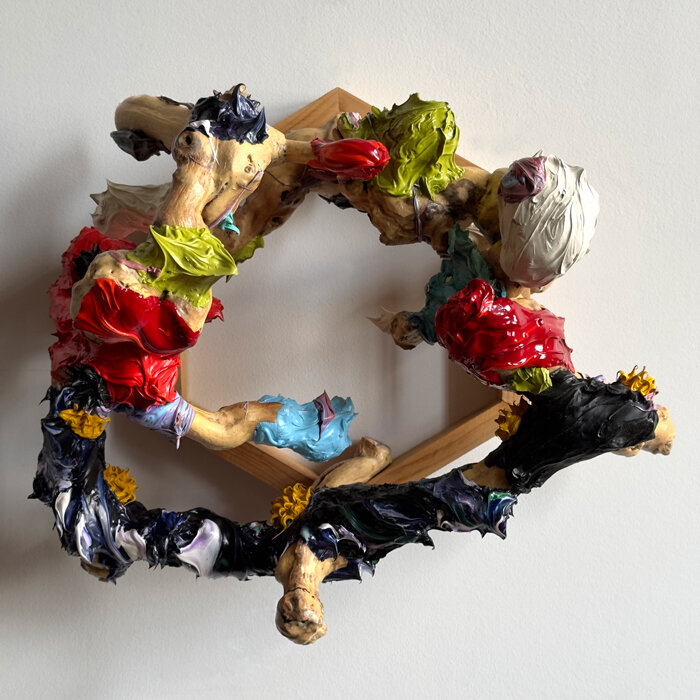
discover a new realm
2024
PTG-641
13" x 16" x 12"
Oil on Wood
saxophonist
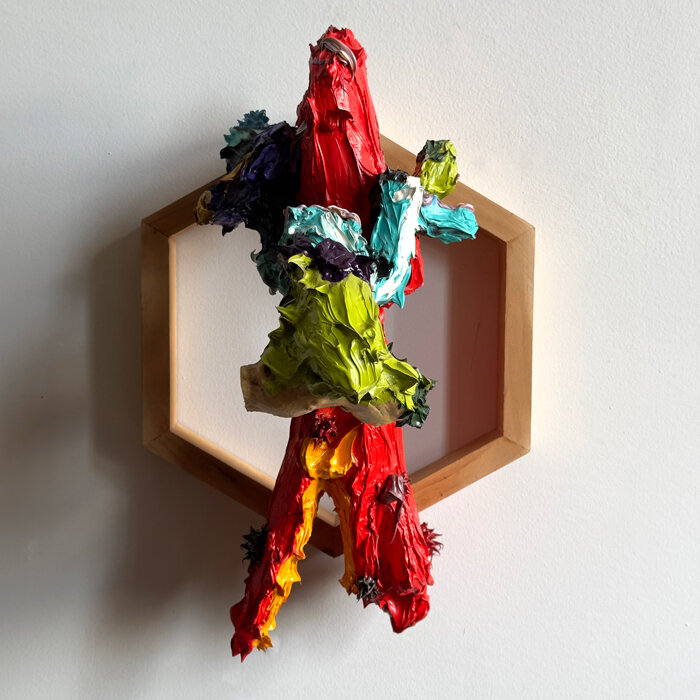
saxophonist
2024
PTG-640
18" x 13" x 11"
Oil on Wood
between precision and caprice
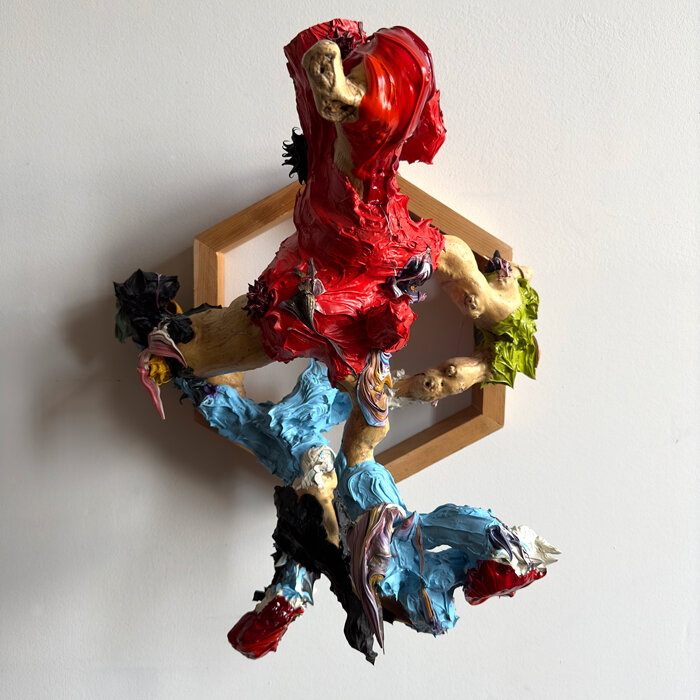
between precision and caprice
2024
PTG-639
Oil on Wood
Continue reading "between precision and caprice"readily to mind
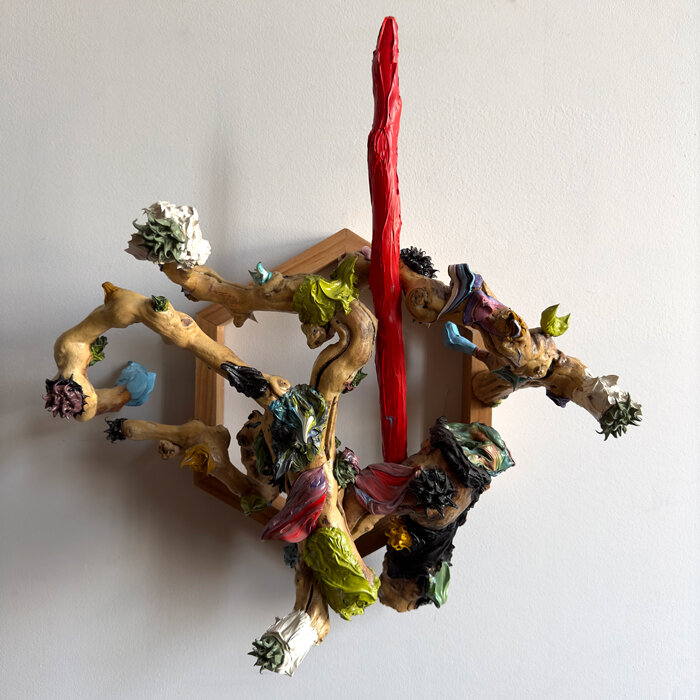
readily to mind
2024
PTG-638
18" x 16" x 9.5"
Oil on Wood
full throated
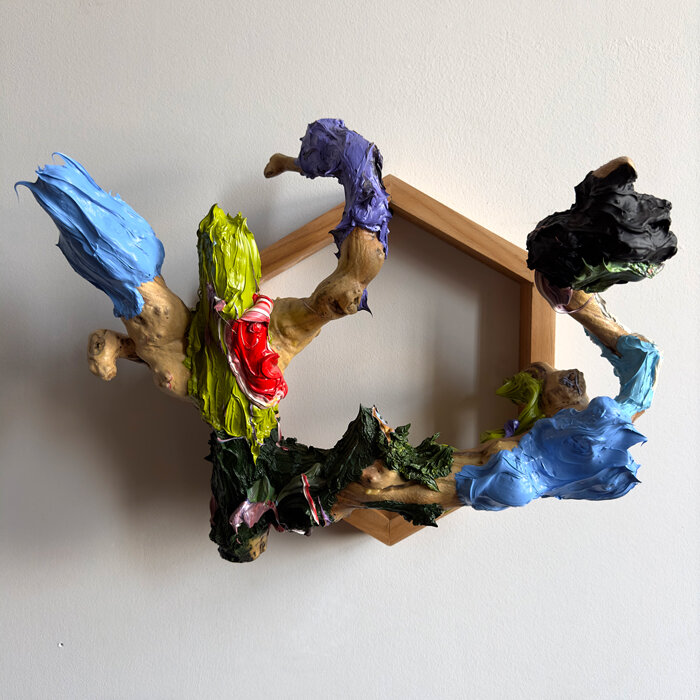
full throated
2024
PTG-637
13"x 16" x 7"
Oil on Wood
a gyration of the wrist until exhausted
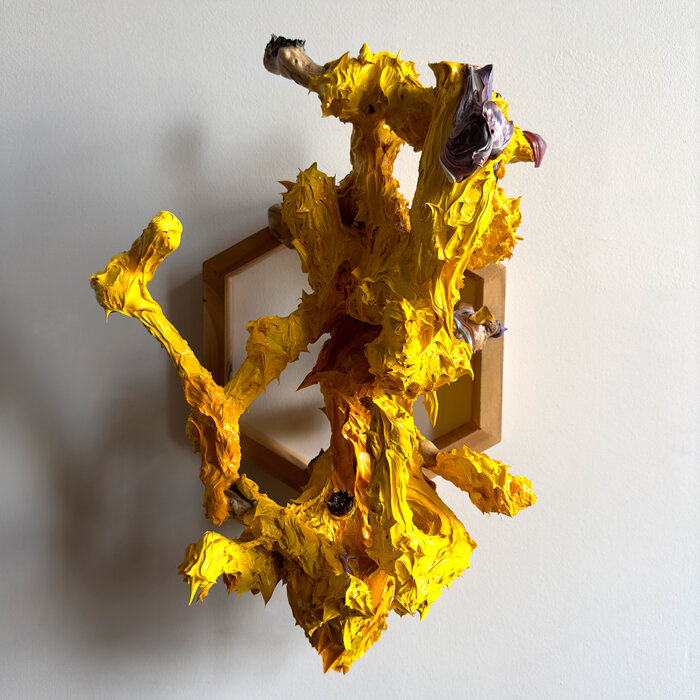
a gyration of the wrist until exhausted
2024
PTG-636
20" x 13" x 9.5"
Oil on Wood
sometimes with caprice
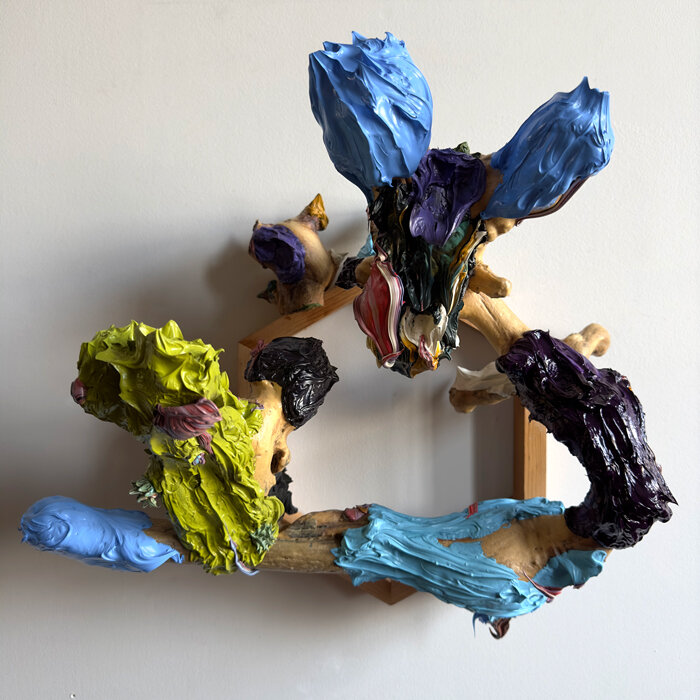
sometimes with caprice
2024
PTG-635
18" x 16" x 11"
Oil on Wood
March 6, 2024
February 22, 2024
Panel Discussion: Hantaï at Timothy Taylor Gallery
A few thoughts after the event:
First of all, it was delightful to have two heavyweights, one a historian of contemporary art and an esteemed New York painter, possessing his own unique pictorial language and a powerful oeuvre. The audience was full of smart talented artists.
Two topics were dominant in the room that night. Warnock dealt out the allover card and Reed, the color card. Via the allover, Warnock connected Hantaï to Pollock's drip painting* (via Neuman's zip painting, extending the lineage). She is known for her expertise in European painting but there's an interesting line item in her bio that goes like this: "...Director of the Clyfford Still Catalogue Raisonné Project at the Clyfford Still Museum in Denver, Colorado". So, she's steeped in the high water mark of New York Abstraction of the 50's and 60's.
Listening to Warnock's introduction, my impression was that issues of materiality and scale is the thrust of her concerns. Flipping through books on Hantaï (Warnock had just published one recently), black and white photographs of Hantaï in the studio are quite impressive. Evidently, Hantaï found studios in abandoned factories, the scale of canvas measure ten, twenty, thirty feet it seems, covering crumbling walls and floors. This was the post war era when populations were migrating from cities to suburbs, factories were retooling for peacetime, immense spaces were available to artists for the first time in history. This, coinciding with the emerging market booming consumer economy and the technological acceleration due to wartime innovation, you have the three significant drivers for post war abstract art.
As an artist who is heavily invested in letting materiality drive painting, the medium long since declared defunct and dead after the Pop/Minimalist/Conceptualist/Postmodernist carried forward Duchamp's Telegram (wink, de Duve, his new book that I'm currently reading), I was delighted to hear Warnock call for a new push for painting that focused on materiality. The thing is, such a project has to be cautious and mindful of what had happened in the long meantime.
Color was the other theme of the night. Reed talked about optical color, that color not in the world but in the retina or cerebral cortex. Or, maybe it's in the world but it's fugitive... Reed lamented that Pollock's use of Duco paint rendered a lovely lavender light that disappeared after the painting aged out. The words "optical color" resonated in the audience and subsequent discussion prompted me to reflect on California's Light and Space movement, James Turell and Robert Irwin specifically. Strange to hear New Yorkers lilt so many years after that era.
Yes, a very nice evening. Warnock, launching salvos like "...contingent effect... the finite vision of a human painting... the temporal eternal finitude..." and Reed, delicately savoring color, speaking of Tintoretto and Rubens.
*
*
*
NB: Regarding Pollock, I'm reading Carter Radcliff's book, a project commissioned by the Pollock/Krasner Foundation, apparently. You can read it here.
NG2: Coincidentally, I visited the Met's newly rennovated European Wing. It was delightful. Of the pics I snapped, Tintoretto caught my attention. Nice to hear Reed drop his name.

Panel Discussion: Alix Le Melédér at Zürcher Gallery
Alix Le Méléder, Paintings 1998-2011, January 16- February 28, 2024, at Zürcher Gallery, New York
Snips from the press release:In Alix le Méléder' s work, for every action there appears a requisite result of restraint or a negation. ... Alix stopped painting in July 2011. She had completed her work. The ethical and philosophical nature of her decision to stop painting comes from her work's internal logic. Alix could typically go on working but it would be meaningless. She felt she had nothing else to say, so echoing Herman Melville's Bartleby, she says "I'd prefer not to". Alix Le Méléder comments :
I realized one day that there was a desire for expression in my paintings and I wanted to free myself from it. I had to erase myself and paint again with color. I felt the need to blow out the space even more, that's why I came to the square format. And then to escape a kind of horizontal face to face with the canvas, I decided to rotate it."
This is my first exposure to le Méléder's painting, it was fortunate to be able to attend the panel discussion on such an occasion. Much of the press release is in the artist's own voice, it was a challenge to find the transition between the gallery's words and hers. I'm not sure why this is significant, but a comment about it feels necessary right now. Evidently, le Méléder spent a lot of time in India and has absorbed Hindu and Buddhistic philosophy to a serious degree. As a result apparently, she glories in the extinction of desire, self, and the liberation of the legendary cycle of death and rebirth.
From my perspective, within the lens of her life, oeuvre and personality, she had recapitulated the theatrical eschatological death wish inherent in Modernity, in both manifestations Modern and Postmodern... a turn of the volume knob on the control panel of painting. Click, click, click until the final snap that powers down the unit off. Painting is her vehicle to a destination called satori. Once she got there, she didn't need the taxicab anymore.
Here's the last lines of the press release in the voice of the artist:
I felt all along the way a great closeness to India in my relationship to the world, to life and to nature; Painting took me on a kind of initiatory journey with its experiences and obstacles, with its phenomena that brought me to awareness. Each step of this journey had to be based on knowledge and not on a simple intuition. These paintings are the manifestations of a phenomenon of shifting consciousness between death or non-being and birth or re-birth. To reach this state, I had to work on a negation of myself, a kind of annihilation, a necessary passage to go towards the unknown.
February 3, 2024
David Rhodes, Doubled
David Rhodes | Aletheia , January 18 - March 3, 2024 HIGH NOON GALLERY, 124 Forsyth Street, NYC
David Rhodes | Partita , January 26 - March 1, 2024 HELM CONTEMPORARY, 132 Bowery, NYC
This is a great NYC month for my friend David Rhodes. Two solo exhibitions are up centering on David's paintings are up in the galleries of NYC this month. This is on the heels of a fine group exhibition that he was included in, Beyond the Surface, Westbeth Gallery, New York. A great painter, fine writer, a sensitive soul. David included me in a group exhibition at Hionas Gallery when I first moved to NYC in 2012-13. I met Peter Hiionas and consequently met the artists orbiting his space, a group of intelligent and committed artists all.
"David Rhodes: Reconfiguring the authorship of a painting", Two Coats of Paint, by Adam Simon
"David Rhodes: Alethia", The Brooklyn Rail, by Saul Ostrow
The other day while enroute to my studio in Brooklyn via the D Train, I was thinking about how this moment was special for David, of how we can see David's overall painting endeavors in a dimensional way because of the several venues that now feature his work. So I wrote the following thoughts out. I'm pasting them raw without any edits or refinements.
On The Two Rhodes Exhibitions
*
*
*
"He was a sceptic, he was young, abstract, and therefore cruel."
― Fyodor Dostoyevsky, Crime and Punishment
*
*
*David Rhodes is not young
Is David Rhodes a skeptic?
David Rhodes is an abstractionist.
David Rhodes is gentle.Alethia: uncovering (truth?) revealing? The subtleties of Heidegger, uncovering the blind side of the Western psyche. The central motif in the High Noon exhibition is the space slicing vertically (and of course diagonally, a constant instrument in his paintings), a parting of curtains, a reveal. Is what is being disclosed is actually "The Origin of the Work of Art"? This suggestion is heavy. Is the clearing for the appearance of things in their world, a setting of a stage?
Partita: music composition, originally referring to a single instrument, Bach used it as a synonym for a suite, a collection.
One, a parting. The other, a gathering.
One, a revelation. The other, an interweaving, a society.The intervals between lines, the thicknesses of lines: we see how they range from edge to edge, we see the frequency, but a pattern among them is elusive. It suggests a signal but resists a decoding. The pattern of lines suggest frequency and frequency suggests waves. A two slit experiment suggests an observer is present, waves collapsing into particles, particles acting in concert as waves.
The ground is as noumemal as a Malevich black square. It is as if we have fallen into the Last Future. (Zero Ten.) The blackness is velvety, there is no color change from one canvas to the next except for a certain shine and a shifting palpable quality. The eyelids close with not even an afterimage in sight... or alternatively, the rays across the inky depth are flashes of an optic nerve. Two moments before and after the performance: first, the silence before the spotlight alights and second after the applause dies. Both are inky black. Both are full of what is to come and what had been.
*
*
*
PPS: More thoughts arise. An artesian well, Rhodes' work is.
Two categories follow, the issue of representation and abstraction and "fit for purpose":
Rhodes' painting is simultaneously presenting (representational) and non-presenting (abstraction). It is both at once like other things and its own thing. At what point is this simultaneity in balance and in conflict? At what point is this frozen? At what point is this a cunning entrapment? At what point is this abundance or depletion?
***
Form Follows Function, as the famous Modernist said. "Fit for purpose" is a British phrase I learned while binging BritBox. There's a classically Modernist economy of means operating in Rhodes' work. Tape goes down, paint splashed on, tape goes up.
Done.
No fat.
Lean.
* Numberless are the world's wonders / But none more wonderful than man / Words and thought rapid as air / He fashions for his use / And his the skill that deflects the arrows of snow / The spears of winter rain / From every wind he has made himself secure / From every wind he has made himself secure / From all but one ... / all but one / In the late wind of death he cannot stand
January 11, 2024
December 19, 2023
PRICELESSNESS
There exists in the real world of art, an operational paradox: the extrinsic value of art is based on an invested intrinsic value. Intrinsic value is further based on an idea, a conviction, a leap of faith about the priceless.
The price of art depends on the unwillingness to part with it.
The exigency of life eventually overcomes the ideal and someday the sheer unwillingness to part with an object will meet a price that conquers it, which in turn ratchets the price of art, reifying its worth.
Continue reading "PRICELESSNESS"Robert Ryman: 1961-1964
Robert Ryman: 1961-1964
David Zwirner Gallery, 537 W. 20th Street, NYC
November 9, 2023--February 3, 2024
Goya, Duchamp and Ryman.
If I were to cite the artists who had influenced me, these are the three that come readily to mind.
Francisco José de Goya y Lucientes, Henri-Robert-Marcel Duchamp and Robert Ryman.
It was Goya's painting, "Saturn Devouring His Children" that had me spellbound as I stood before it when I was thirteen years old. I knew deep down inside at that moment that I would be an artist, a painter. I have recounted this event elsewhere in this weblog.
In the history of Modern Art, Marcel Duchamp is impossible to ignore. Postmodernism wouldn't be the same without him, perhaps it wouldn't have existed. I understand his polemic against painting as "merely retinal" as the necessary artifice of argumentation in order to move into a more conceptual direction in art. Apart from his stature, two aspects stand out for me. Duchamp is the exemplar of the ultimate independence of the artist. Chalk it up to anarchism or his reading the books of Max Stirner, Duchamp followed inspiration whenever it hit him and wherever it led him. The second recourse I found to Duchamp was regarding chance and the fugitive nature of materials. When I discovered the malfunction of my use of titanium white pigment around 2013, it was his acceptance of the damage to his Large Glass that inspried me to steer into the skid and discover a new realm of painting that I would have never considered otherwise. I've painted a few paintings in direct tribute to Duchamp. If you are reading this before the end of January 2024 and want to see an example, I have one hanging in my solo show at HELM Contemporary, 132 Bowery, NYC.
But this post is supposed to focus on Robert Ryman, and there's an excellent exhibition in town featuring his painting at David Zwirner Gallery: Robert Ryman: 1961 - 1964.
In the summer of 2017, I started to act on gathering thoughts about the shear weight of my paintings, typically canvas stretched over wood panels. I began daydreaming about what a lighter support could look like, and I thought of Robert Ryman's treatment of the object nature of painting. Already, the nature of my project was to focus on the fact of physical paint, to derive a formal vocabulary from impasto that rivals, that adds to the optical nature of color, line, tonality, etc. Already into the base assumption of my painting, the doorway to what I started to call the Ryman Code was open, waiting for me to walk through it. In Ryman's works, every aspect of a physical painting from the paint in each layer, to the linen/canvas, to the [snip: not the wood, more about that later] wire, to the brackets, to the screw on the wall... each physical component was distinct and expressive.
A non trivial detail in Ryman's rather thin bio is his experience as a jazz musician, a saxophonist, when he had first arrived in NYC in 1953. Lost somewhere in my YouTube stream is a video about Bill Evans talking about his work in the early 60's, not coincidentally during the period of time Ryman was making those paintings in the Zwirner show. Evans talked about how he wanted to assemble a group of musicians and play in such a way that each one would be distinct and full throated. This is exactly Ryman's program.
Let componentization be a word. Each component in the entirety of Ryman's physical paintings sings full throated. Notice that when people refer to painting, the support falls away. Painting in common everyday parlance nearly achieves the disembodied two dimensional flatness of Greenbergian fame. People don't generally consider the material fact of painting. Paintings are habitually considered to be windows to an imagined place, but for Ryman, the material existential fact of a painting in all of its aspects, parts and pieces are the place, the destination of his works.
Within the realm of paint-on-canvas, components reside. In this exhibition, during the years '61 - '64, there were slippage between the parts and pieces: pencil lines, mask, washes, color daubs and finally / famously, his white daubes. Even his signature was an equal player in the band. All are discrete, and almost, almost but not quite, interchangeable. There is slippage between layers, slippage between components and slippage between precision and caprice.
But for all the apparent movement, the ranks stay in order. Ryman's painting is like an exploded diagram. Paint is not used as the adhesive to a wall, supporting a facture of wires, brackets and linen. All stays in place, Bill Evans is still the band leader. Even within the realm of Ryman's painting proper, the troops remain in ranks. Pencil plans may change and move laterally, but they stay in the rear. Washes don't veil. Curiously, in the painting proper, there is a whole adventure of color daubs that is concealed with white paint, sometimes with precision and sometimes with caprice. This layer is almost like Ryman's secret life, his weekend in Vegas. But what is common to layers colored and white is a consistency of brushload and expenditure. I can see him in his studio, in my mind's eye: brush in hand, a charge from the palette, a gyration with the wrist -the cameraman cuts to a close up of his unusually large glassy spectacled eyes, wide almost to his temples, crowned by his owl-like wizard eyebrows- a gyration of his wrist until the exhaustion of paint material. Reload.
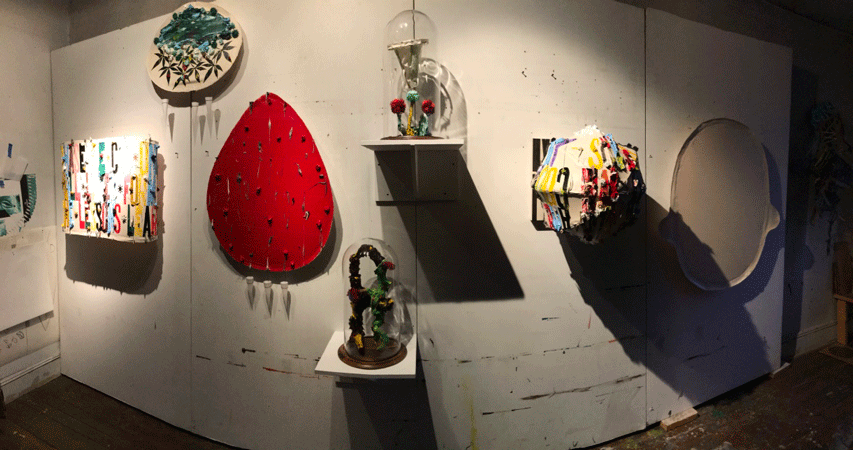
(Studio: December, 2017)
*
*
*
PostScript 1: Was Ryman the proto-autist?
PostScript 2: During the seven years from arrival to NYC to his exit from MoMA security service, what was his making? I read somewhere that he noodled paint on museum postcards. Reminds me of Richter's paint spattered Polaroid photographs. Note that there is no arc in Ryman's oeuvre, or at least it's really, really flat. Not like Rothko, whose early works are starkly different from his mature paintings. His arc is like a climb up El Capitan.
PostScript 3: Ryman never treated the wood stretchers like the other elements in his work. They're missing. I wonder if this is because he never had a chop saw in his studio?

































